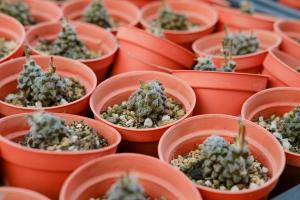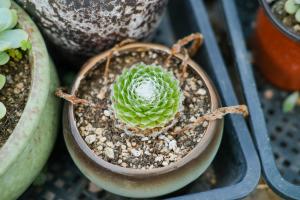How Do Plants Lose Water
Plants lose water through a process called transpiration, where water vapor is released from the leaves into the atmosphere. This process is essential for the survival of plants and their ability to transport nutrients and minerals throughout the entire plant's system. However, excessive water loss can pose a significant threat to the plant's health, especially in arid environments where water is limited.
The Role of Stomata
Stomata are tiny pores found on the surface of leaves and stems, which regulate the plant's transpiration rate. These pores allow for the exchange of gases, such as carbon dioxide and oxygen, and the release of water vapor. The opening and closing of stomata are controlled by complex mechanisms that allow plants to respond to changes in temperature, humidity, and light intensity. When the stomata are open, water vapor is released, and when they are closed, water loss is reduced.
The Impact of Environmental Factors
The amount of water lost by a plant through transpiration is affected by various environmental factors. Temperature, humidity, and wind speed can all directly impact the rate of transpiration. As the temperature increases, the transpiration rate also increases, as more water is required to maintain the plant's temperature balance. Similarly, low humidity and high wind speeds can lead to increased water loss due to the higher levels of water vapor in the atmosphere.
The Role of the Soil and Root System
The soil and the root system also play a critical role in regulating plant transpiration. If the soil is dry, the water uptake by the roots is reduced, causing the plant to decrease its transpiration rate. In contrast, if the soil is moist, the root system can absorb more water, allowing for a higher transpiration rate. Additionally, the root system can also regulate the water uptake by controlling the opening and closing of the stomata to reduce water loss during periods of water stress.
The Consequences of Excessive Water Loss
Plants that experience excessive water loss due to transpiration can suffer from several issues, including wilting, leaf curling, and stunted growth. In severe cases, the plant may die due to water stress. These issues occur as a result of a lack of water reaching the leaves, leading to a buildup of toxins that affect the plant's overall health. To prevent excessive water loss, plants have developed adaptations such as thick cuticles, reduced leaf sizes, and succulent leaves, all aimed at reducing water loss through transpiration.
The Importance of Water Conservation
As water resources become increasingly scarce, it is essential to find ways to conserve water in all aspects of life, including plant cultivation. Strategies such as drip irrigation and rainwater harvesting can significantly reduce water usage in agriculture, while plant selection and landscaping practices can also help conserve water in gardens and parks. Additionally, modifying watering schedules and using drought-resistant plant species can reduce water usage and protect plants from excessive water loss.
Conclusion
In summary, the process of transpiration is essential for plant growth and survival, as it facilitates the uptake of nutrients and minerals. However, excessive water loss due to transpiration can negatively impact the plant's health, leading to a range of issues. By understanding the factors that affect plant transpiration and implementing water conservation practices, we can ensure the sustainable cultivation and growth of plants in a world where water resources are increasingly limited.

 how many times do yo...
how many times do yo... how many planted tre...
how many planted tre... how many pine trees ...
how many pine trees ... how many pecan trees...
how many pecan trees... how many plants comp...
how many plants comp... how many plants can ...
how many plants can ... how many plants and ...
how many plants and ... how many pepper plan...
how many pepper plan...






























